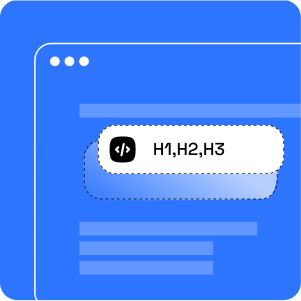I’ve been working in eCommerce, internet solutions, and artificial intelligence for years. When I first noticed visits from chatgpt.com in Google Analytics, I considered it a curiosity. Over time, these visits started increasing, so I decided to dig deeper: how is artificial intelligence changing the way users search for information online and influencing search engine optimization? In this post, I’m sharing what I’ve learned based on the articles and guides I’ve read about optimizing content for language models.

Why are traditional search engines no longer enough?
Just a few years ago, most users would type a phrase into Google, review the list of results, and choose one of the suggestions. Today, we increasingly ask questions directly to artificial intelligence. The answer comes immediately — no need to click on a link.
That’s how tools based on large language models work, such as:
- ChatGPT
- Gemini
- Perplexity
- Claude
- Copilot
These are not just chatbots. They represent a new layer of information retrieval, where websites play a different role: they are sources of knowledge from which models construct responses.
What is search engine optimization for large language models (LLMO)?
Optimization for large language models (known as LLMO) is the process of adjusting a website so that it:
- is readable and understandable for AI,
- presents reliable and well-structured information,
- has topic authority in its field,
- increases the chance of being cited in AI-generated answers.
This is not a replacement for traditional search engine optimization (SEO), but an extension – adapted to the new way we use the internet. LLMO is not a replacement for traditional SEO—it’s an evolution tailored to the new internet landscape.
How does traditional search engine optimization (SEO) differ from AI optimization?

| Area | Traditional SEO | AI Optimization |
|---|---|---|
| Keywords | Important | Less important – meaning and context matter more |
| Content style | Often formal | Conversational and natural |
| Goal | High ranking in search engine | Be the source of AI answers |
| Content length | Long articles | Can be shorter if they provide clear answers |
| Authority | External links | Quality content, citations, timeliness |
How to prepare your website to be attractive for AI – 7 principles
1. Write clearly and naturally – like you’re speaking to the reader
AI models are getting better at understanding language, but that doesn’t mean they understand everything perfectly. Language models appreciate clarity, simplicity, and transparency. Avoid unnecessary jargon, complex metaphors, and corporate-speak. Don’t try to sound “smart” – just convey value clearly and directly. Good models are educational blogs or technical guides.
What works:
- short, to-the-point sentences,
- natural questions and answers,
- avoiding fluff and filler.
2. Use logical and clear heading structures

Headings organize content – they help users navigate and allow algorithms to understand what the page is about. Even though some claim technical tags (H1, H2, H3) no longer matter, most search engine optimization experts and content creators agree: proper use still helps.
Large language models that generate responses often use data gathered by crawlers – like those used by search engines (e.g., Google, Bing, or Perplexity). These crawlers analyze HTML and build a knowledge base, which AI later uses. If a page has a clear heading structure, it helps split the text into logical topic sections and increases the chance of being recognized as a valuable source.
For readers, visual clarity matters most – consistent layout, short sections, clear titles and subtitles. So it’s worth ensuring both semantic HTML and clean formatting.
Best practices in brief:
- one H1 heading per page defining the main topic,
- H2 for main content sections,
- H3 for details and subpoints within a section,
- a clear layout that helps scan the content quickly.
3. Add FAQ sections with questions and simple answers
Language models love structured information. A FAQ section (Frequently Asked Questions) helps AI identify clear questions and answers – and these are often quoted in responses. The more concise and clear the answer, the higher the chance it’ll be used.
Tips:
- Answer in 2–4 sentences, in a “question – direct answer” style.
- Use natural language, without over-stylization.
- Don’t copy definitions from Wikipedia – write in your own words.
4. Enrich content with concrete data, examples, and bullet points
AI processes content better when it includes specific information and facts. If an article contains tables, lists, figures, stats, case studies, or expert quotes – it becomes much more “quotable”.
What to include:
- real-life or market examples (e.g., how a specific company used large language model search engine optimization (LLM SEO)),
- bullet or numbered lists,
- original data, charts, infographics (with ALT descriptions),
- actual results, comparisons, cases.
5. Regularly update content and remove outdated information
AI increasingly relies on fresh and current data. In systems like Perplexity or ChatGPT with browsing, older content might be skipped if it lacks current dates, data, or is outdated. Updating content boosts your chances of being cited again.
What to do:
- add current stats, reports, quotes from the present year,
- remove or update outdated fragments (e.g., “in 2023, it will…”),
- include the article’s last update date (e.g., in the footer or header).

6. Use structured data (schema.org, JSON-LD)
Structured data helps AI understand what the content is, what information it contains, and how to categorize it. This improves your chances of being shown as a foundational source – for instance, in Google’s AI Overview.
Key data types:
- FAQPage – for Q&A sections,
- HowTo – for step-by-step guides,
- Article – for blogs and informational posts,
- Product – for product pages.
Make sure your structured data is embedded and validated correctly using tools like Google Rich Results Test.
7. Monitor AI citations of your website
Perplexity clearly shows which sources it uses – so you can manually check if your site appears. For ChatGPT, it’s more complex. In the browsing-enabled version (e.g., ChatGPT 4 with “Browse with Bing”), AI sometimes includes source links or footnotes, though not always visibly.
How to track:
- Visit perplexity.ai, search topics related to your site and look for citations.
- In ChatGPT (with browsing), ask industry-related questions and check if your domain appears in footnotes or links.
- Track traffic from chatgpt.com, perplexity.ai, bard.google.com in Google Analytics (source/medium).
- Save visible citations and monitor them regularly (e.g., monthly).
This is a real way to measure whether your content is “living” in the AI ecosystem.
Key practices to increase your visibility in AI answers
- Write for the user, not just the search engine.
- Use natural, conversational language.
- Follow H1–H3 structure, bullet points, and lists.
- Create FAQ sections with direct answers.
- Add sources, examples, and case studies.
- Regularly update and prune outdated content.
- Optimize for mobile and page speed.
- Check if your content is being cited by AI.
Summary
AI-powered search engines are the future – and that future is already here. It’s not enough to rank high in Google. You need to be the answer that AI chooses and delivers to the user.
While the use of large language models is already yielding fantastic results, we’re still at the beginning. AI models are learning faster, and the way we search is changing rapidly. What works today might look very different in a few months.
That’s why it’s important to stay alert, experiment with new tools, and adapt your content to meet the expectations of both people and artificial intelligence. Those who understand this trend early will gain an edge – not just in search engine optimization (SEO), but across their entire online presence.
Together with the DeveloPress team, we closely follow the development of this market and help our clients prepare for the changes ahead. Discover how we create content that speaks not only to people but also to AI – and how we can support the growth of your brand.







